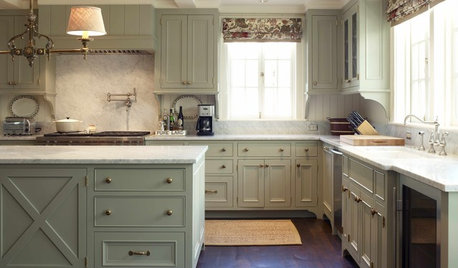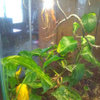diy 440 watt cf fixture
Cdfortin
19 years ago
Related Stories

KITCHEN DESIGN9 Ways to Save on Your Kitchen Remodel
A designer shares key areas where you can economize — and still get the kitchen of your dreams
Full StoryMore Discussions
Hi~as some of you may know, I'm in the process of building a 300+ gallon terrarium/orchidarium. Today I finished the light fixture. It will go inside of a decorative lighting box at the top of the cage.
In the pics, those are NOT the bulbs I will be using--I just use those as test ones so I don't have to risk breaking the ones I will use. And, yes, I know, it probably would have been better to use (4) 96 watt fixtures instead of (8) 55 watt ones, but I thought of that a little too late.
SPECS: 440 watts, 8 x 55 watt straight pin compact flo's; two top mounted fans and two fans on the back panel; miro polished reflectors; water resistant endcaps; 4 ballasts.
4 of the fixtures are retro kits from ah supply. The other 4 were gutted from a Jebo cf fixture.
Here is a link that might be useful: Light Fixture Pics


dfourer
gawdly
Related Professionals
Cary Landscape Contractors · Commack Landscape Contractors · Dixon Landscape Contractors · Hampton Bays Landscape Contractors · Mahwah Landscape Contractors · Forest Hill Landscape Contractors · Mount Pleasant Fence Contractors · Sunrise Manor Fence Contractors · Westmont Fence Contractors · Cutler Ridge Window Contractors · Lauderhill Window Contractors · Ames General Contractors · Milford General Contractors · Newington General Contractors · Westchester General ContractorsCdfortinOriginal Author
Dionaea_muscipula
sahoyaref
nathanhurst
dfourer
sahoyaref
CdfortinOriginal Author
dfourer
sahoyaref